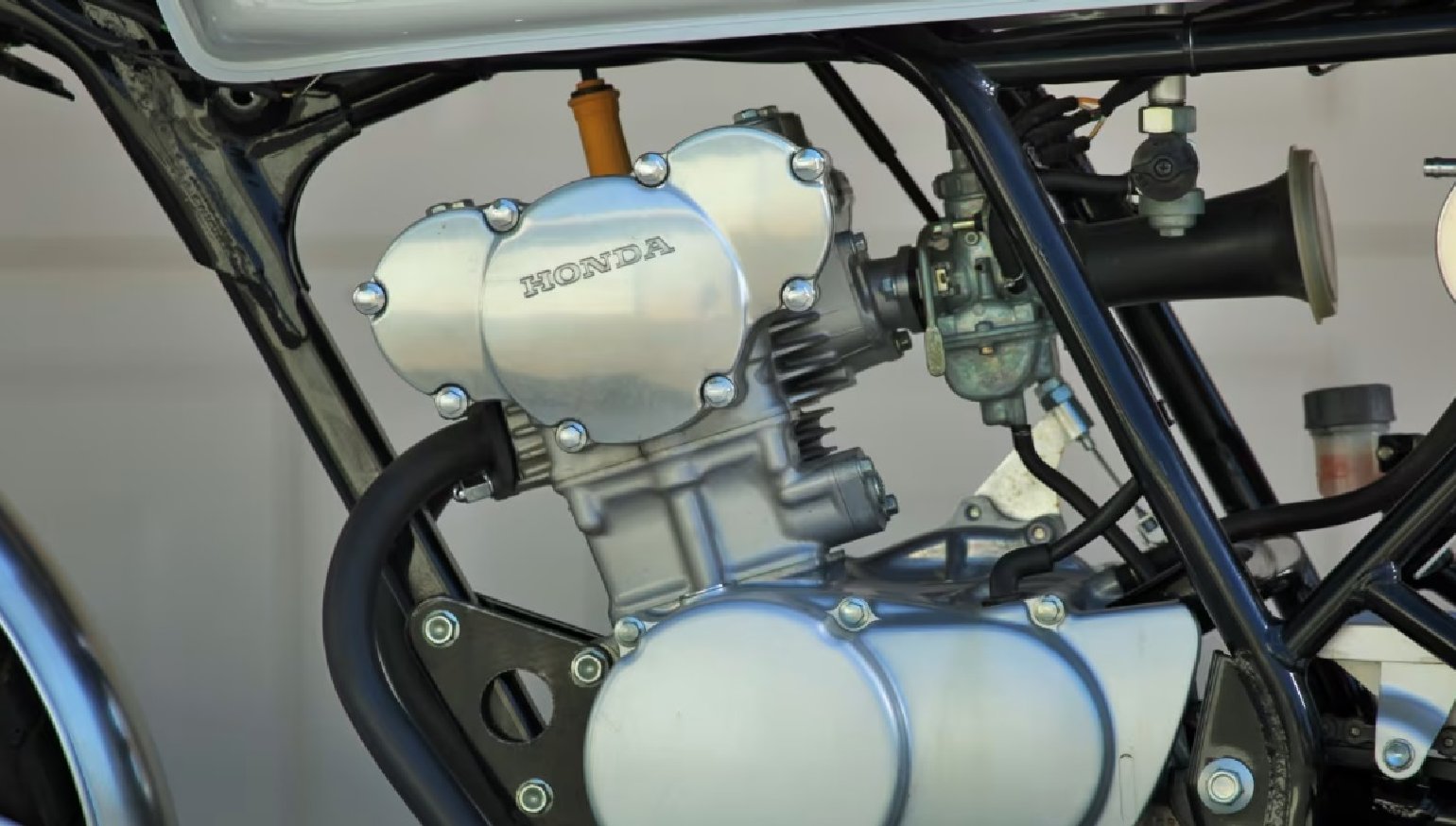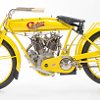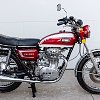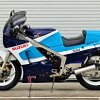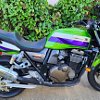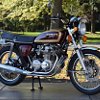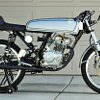I'm on record as not having much use for antique motorcycles. I'm a member in good standing of the "Ride 'em, don't hide 'em" club, and there's no way I could manage to get to the end of the block on a century-old, pedal-start, hand-shift, manual-advance museum piece without wrapping it and me around a telephone pole.

When it comes to old bikes, I gravitate toward me the ones that meant something to me, not the rarest or most likely to appreciate in value. In general, these are Japanese bikes that I grew up with or around, or wanted but could never afford. There are plenty of these going on the block at the big Mecum motorcycle auction in Las Vegas at the end of the month. Here are the top five I'd bid on (in that fantasy world where I had money to spend on old bikes).

1972 Yamaha XS2
When I started riding, there were three distinct groups of bikes on my radar — Japanese, British, and Harley-Davidsons — and I could have gravitated toward any one of them. Harleys were out for the same reason then as now — too big, too slow, and too expensive. I liked the look of vertical-twin Britbikes — I still do — but the challenges of owning them were well known, even then. But when Yamaha came out with the XS1 in 1969, I couldn't take my eyes off it.
Here was Yamaha's take on the archetypal British 650 cc roadster, substantially improved compared to the leaky, non-unit Triumphs, BSAs, and Nortons of the day. Like them, it was kickstart only and had drum brakes. The later models, like this 1972 XS2, were upgraded with a disc front brake and an electric starter aided by a compression release.
Considered a "big" bike in its day, the XS2 loomed large in my youthful imagination, so I was surprised when years later I finally got to ride one. It was small, and narrow, and modestly powered, and shook ferociously at any engine speed above idle. Except for that last feature, it was exactly the kind of bike I like now. Today you could give me a warm, sunny afternoon, an XS2, and a gently curving road, and I'd be a very happy boy.

1989 Suzuki RG500 Gamma
In 1985, I was a staffer at a motorcycle magazine based in Los Angeles. We got to test some pretty wild bikes, but by that time street-going two-strokes had disappeared from the U.S. market. My first two bikes were strokers and I retained an affinity for them long after they were no longer welcome here. Imagine my delight, then, when we got our hands on three outlawed two-strokes — a Honda NS400R, a Yamaha RVZ500R, and a Suzuki RG500 Gamma — and were given a week to see if forbidden fruit actually tasted as good as everyone said.
It did, and it was delicious. All three bikes were dazzling, but I kept coming back to the Gamma. It was genuinely batshit crazy, the physical embodiment of the phrase "race bike with lights." I dug deep in my mental files to dredge up the reflexes I had when I raced a Yamaha TZ250, and the Gamma rewarded the effort with razor-sharp handling, eyeball-bulging braking, and a top-weighted powerband that kept me tap dancing on the shifter like Fred Astaire.
At the end of the test I declared the Gamma my hands-down favorite. I've sometimes wondered what it and its two-stroke ilk might have become if they'd been allowed to flourish. We'll never know, but a Gamma in my garage would take me back to a time and place I recall fondly, even if riding it as it was meant to be ridden would leave me sore and exhausted the next day.

2001 Kawasaki ZRX1200R
I'm past the point in my riding career where I drag a peg in every corner and redline the engine between stoplights. These days, I'm less likely to say "Outta my way, losers!" than "You guys go on, I'll catch up." But deep in my soul, in a place I don't often go these days, there's a place for a bike like the ZRX1200R.
The ZRX1200R is as subtle as a punch in the mouth. It screams speed even when it's parked. It's an affront to polite society, a poke in the eye of the Mrs. Grundys of the world, sure to corrupt the hapless youth who dares to swing a leg over it. I love it for those reasons alone.
The ZRX's ancestor was the Eddie Lawson Replica of 1982, which commemorated Fast Eddie's AMA Superbike Championship bike of 1981. I was a racer, too, though not at that level, and there's still enough racer in me to want a big, loud, stupidly fast motorcycle that leaves chaos and confusion in its wake. And it's the right shade of green.

1977 Honda CB550F
I'm never sure if I'm drawn to a particular old bike because it's cool or valuable, or because it reminds me of a time in my life I now look back on with nostalgic fondness. I bought a Honda CB500/Four new in 1972 and for a couple of years it was my only transportation. I was a road salesman for a motorcycle aftermarket company and rode from shop to shop with my catalogs and samples in a pair of cheap vinyl saddlebags. The bike ran like a Swiss watch, smooth and quiet, and tune-ups were easy with tools I already owned.
The CB500 eventually went away, and a few years later I got a CB550 I called the Junkyard Dog. It was as ugly as its namesake but loyal and reliable. It wasn't fast, and didn't handle spectacularly well, but it did everything competently, without any fuss, and never let me down.
Maybe that's why whenever I see a bike like this CB550F, I have to fight the urge to reach for my wallet. It's practically an antique now, but so am I. Almost every other CB550 I see has a subframe-ectomy, a plank covered in brown vinyl for a seat, and, for reasons beyond understanding, knobbies. Not only would I enjoy riding this 550, I'd be saving it from a cruel fate at the hands of Philistines.

2004 Honda CB50R
Years ago, I bought a basket-case Honda CR110 50 cc production racer. It was the customer version of the RC110 factory GP bike, and had four valves, gear-driven dual-overhead cams, and an eight-speed gearbox. Power output at 13,500 rpm was a giddy 8.5 horsepower. I never managed to locate the parts to bring it back to life so I sold it for a $200 profit and thought I'd done pretty well on the deal. Look up what a mint CR110 goes for now and see how smart I was.
The CB50R was essentially a repop of the RC/CR110, with six speeds and seven horsepower at 14,000 rpm. It was a track-only production racer that came out long after the 50 cc class disappeared from virtually every racing organization's rulebook, so I was never quite sure what you were supposed to do with it. I tried sitting on one once but failed. To ride it, I'd have needed two of them, one for each foot, like skates. The MSRP was $5,500, a price apparently chosen to ensure no one would ever buy one.
Today the CB50R would be one of the few exceptions to my "Ride 'em, don't hide 'em" rule. I'd put it in the living room under a soft spotlight and just enjoy looking at it. It's pure racer, with nothing that doesn't need to be there. It's also a reminder of the era when legends like Mike Hailwood and Jim Redman helped Honda change the face of GP racing.
Those are my personal choices. With 2,000 motorcycles up for bid at what Mecum claims is the world's largest vintage motorcycle auction, there are plenty of other options, so which ones are your dream bikes?




